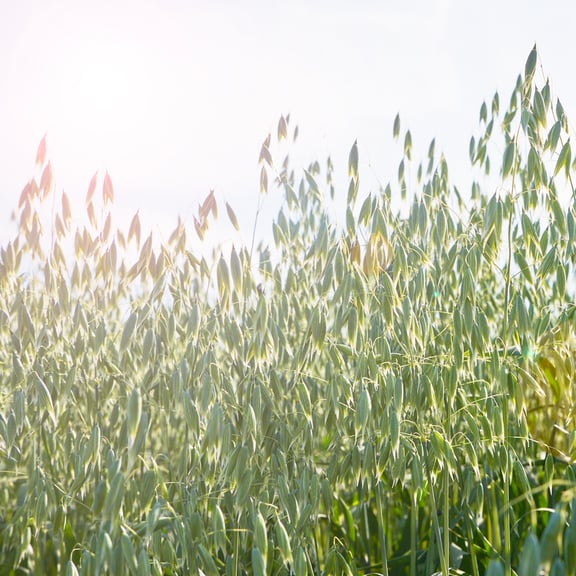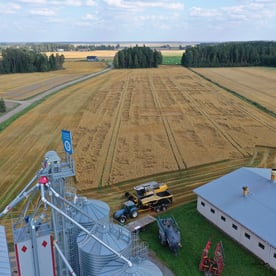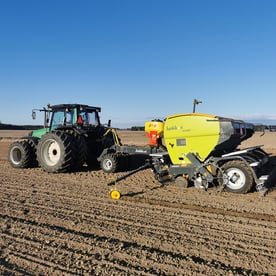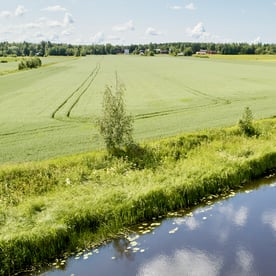Farmers visit the mill:
quality oats, diplomas and plans for 2023
The first oat harvest under the sustainability farming programme has been harvested. Despite the rains in late summer 2022, the quality of the oats is significantly better than in previous years and also compared to the region average. During the farmers' visit to the mill, everyone already had their eyes on the 2023 season, when the best of the 2022 harvest were awarded with diplomas.
The gluten free oat contract farmers participating in the sustainable farming programme gathered at Helsinki Mills in Vaasa to discuss the results of the past harvest season, the selected oat varieties, the upcoming contract period, commercial prospects and plans for 2023. During the factory tour, farmers were able to see the journey of oats from the reception of the grain to cleaning, drying, cutting and heat treatment, all the way to packaging and storage. Kari Alasaari, a pioneer in precision farming and an expert in the Sustainable Farming programme, brought the latest information on future crop rotation requirements to the event.
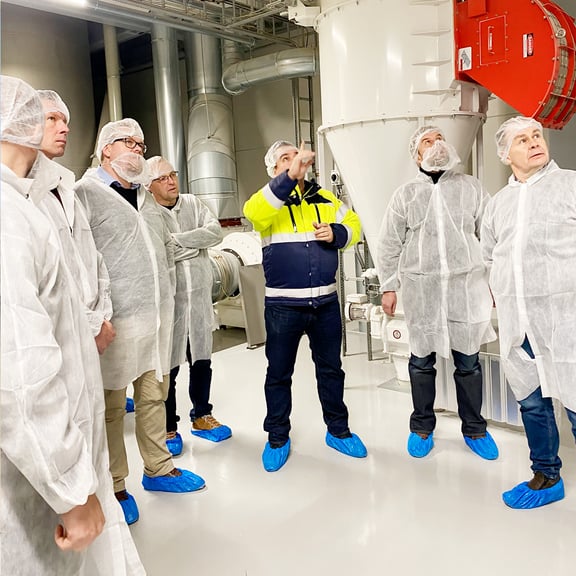

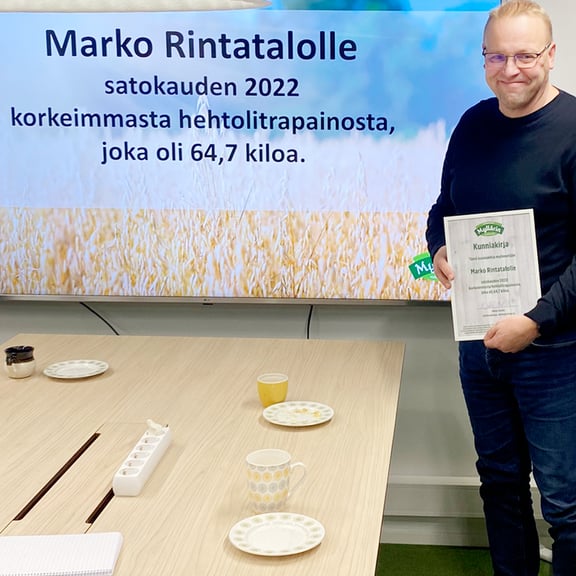
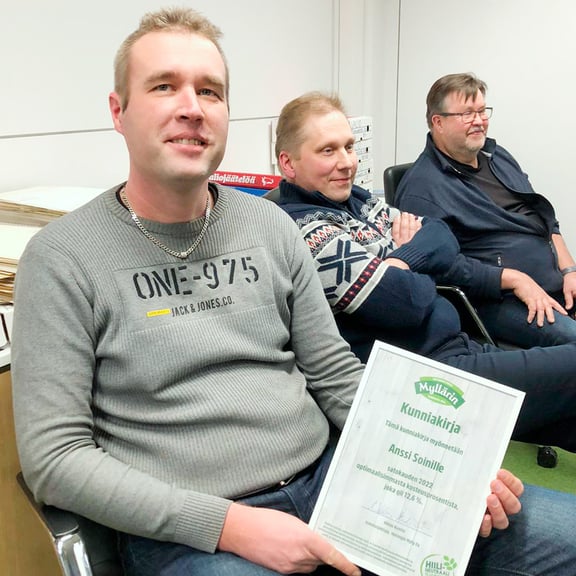
1 - 2 TONNES MORE PER HECTARE
Ville Mäki, Production Manager at Helsinki Mills, is pleased with the oats that have been delivered to the mill as a result of the sustainable farming programme. "The oats have been of very high quality and large in size, so the yield has been very good," he says.
A good yield of common oats in the South Ostrobothnia region has been around 5 tonnes per hectare, compared to 6-7 tonnes per hectare on farms participating in the sustainable farming programme.
The best results of the 2022 harvest were rewarded with diplomas. Marko Rintatalo had the highest hectolitre weight of 64.7 kg, Mikko Hölso the lowest screening percentage of 0.96% and Anssi Soini the optimum moisture percentage of 12.6%.
- All of these have a bearing on how the oats perform in the mill. The moisture content affects how easily the oats will come out of the husk in the huller. If the oats are too dry or too moist, the flake packet may become include husks, and this will annoy consumers eating their morning porridge. In terms of yield, it is important that the grain is large enough, so that when it is put through a two-millimetre sieve, as little as possible passes through," Mäki points out.
If necessary, gluten free oats can be traced back to the farm. Pekka Kultti, Procurement Manager for oats at Helsinki Mills, hinted to the farmers that they can tell if the oats in the package are from their own farm by the best-before date and their own tipping time.
SUSTAINABILITY BENEFITS NATURE, FARMERS AND THE MILL
As a true expert in the field, Pekka Kultti is heavily involved in designing the measures of the sustainable farming programme and sharing information with farmers. "Our sustainable farming programme benefits nature, farmers and the mill," said Pekka Kultti in an interview with Käytännön Maamies trade magazine in the summer of 2022.
Mandatory measures in the farming programme include targeted fertilisation and using flowering plants in the crop rotation. One of the benefits of targeted fertilisation is that the plant is fertilised according to its nutrient needs, which creates savings in fertiliser costs. The harvest produced in this way is cleaner in terms of environmental load, because the fertiliser applied goes into the crop and does not run off into the environment.
Flowering plants in the crop rotation improve the soil fertility of the fields and increase the yield of the next crop. They also contribute to biodiversity. For gluten free oats producers, the plants have mostly been rapeseed or pea. With the new legislation (CAP programme) bringing more requirements for the crop rotation, discussions among contract farmers focused on what other varieties could be introduced into the rotation.
There are eight optional measures in the programme, of which each farmer has chosen two. For the 2022 harvest season, the most popular optional measure was extended crop cover, which was tried on seven farms. The field is not ploughed in the autumn, but tilled to a depth of about 10 cm. In this way, the plant waste will be mixed lower into the soil when ploughing. The practice, also known as cultivation, improves the structure of the field and increases carbon sequestration by making the field more mulched and reducing nutrient leaching and erosion.
The pilot will continue until the 2023 harvest season and after that, possible new measures will be considered.
OUR SUSTAINABILITY FARMERS FAMILIAR FROM SOCIAL MEDIA
Many of our contract farmers are also active on social media. Follow the farms and learn more about how a modern Finnish farmer operates and responsibly produces good raw ingredients for your table.
On Instagram:
Hölsö farm
Jonkka farm
Kultti farm
Rintatalo farm

